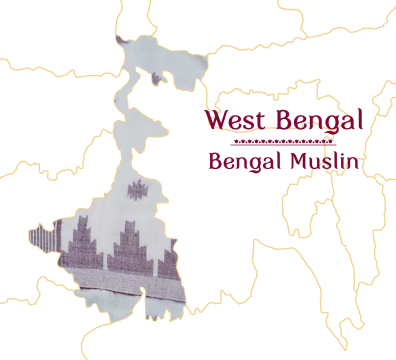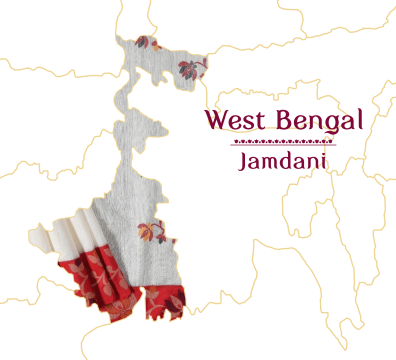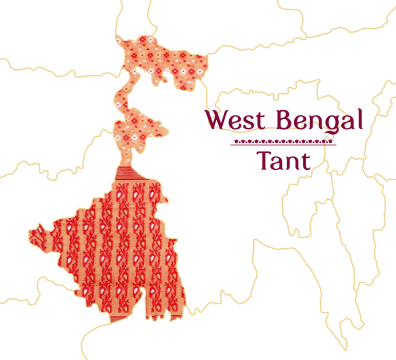- No Products In The Cart
- start shopping

Bengal Muslin
The revival of muslin, a fine cotton cloth famous for centuries, has infused financial stability into the lives of traditional spinners and weavers of West Bengal who were struggling for survival earlier. Muslin, a cotton fabric of plain weave, was hand woven in the region around Dhaka, Bengal (now Bangladesh), and exported to Europe, the Middle East, and other markets, for much of the 17th and 18th centuries. Bengal has manufactured textiles for many centuries, as recorded in ancient hand-written and printed documents.


Jamdani
The name Jamdani is of Persian origin and is strongly suggestive of Mughal influence. It is a compound word wherein “jam” means flower and “Dani” means vase. The name is suggestive of the beautiful floral motifs that adorn these gorgeous sarees. The Bengali version of the name, Dhakai, comes from the place of its origin — Dhaka in Bangladesh.
The base fabric for Jamdani is unbleached cotton yarn and the design is woven using bleached cotton yarns so that a light-and-dark effect is created. The process is extremely time consuming as it involves a tedious form of hand looming. The making of Jamdani involves the supplementary weft technique along with the standard weft technique. With the latter, the base sheer material is made on which thicker threads on used to create designs. Each of the supplementary weft motif is then added manually by interlacing the weft threads with fine bamboo sticks using individual spools. This process results in the vibrant patterns that appear to float on a shimmering surface, which is a feature unique to Jamdani sarees.
Tant
Generally ‘Tant Sarees’ are taken as a comfy dress material that is appropriate for the typical climatic conditions that prevail in India (hot/humid). You can distinguish ‘Tant Sarees’ by the broad borders and the ornamental ‘pallav’. The ‘pallav’ will have attractive designs like ‘geometrical patterns’, ‘paisley’, ‘flowers’, or other creative designs. In general, cotton cords are used for weaving and the material will be light and translucent.
